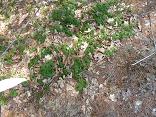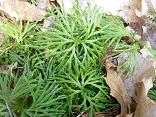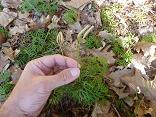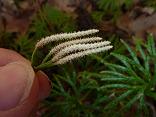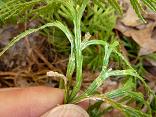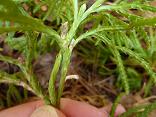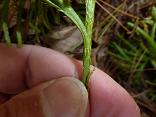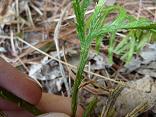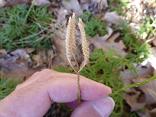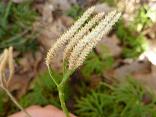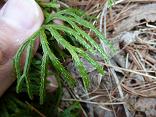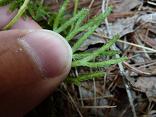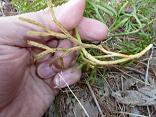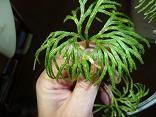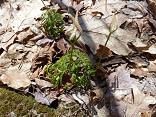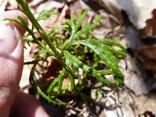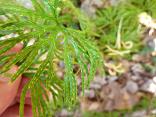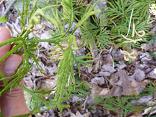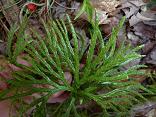Southern Ground Cedar can be distinguished from similar Clubmosses:
- Northern Ground Cedar (Diphasiastrum complanatum) has only one or two
strobili (cone-like structure) per stalk with Southern Ground Cedar has 2 to 4.
Northern Ground Cedar has conspicuous annual bud constrictions near the tips of the
branchlets. Southern Ground Cedar has no constrictions. Northern Ground Cedar has
a straggly growth pattern, but you can see from the picture at the bottom right
that the laternal (side) branches of Southern Ground Cedar align in the same
plane giving it a more orderly, fan-like appearance.
- Blue Ground Cedar (Deeproot Clubmoss) (Diphasiastrum tristachyum) has branches that are 4-angled (nearly square) in cross-section. It has a flat-topped growth form. The leaves on the top and underside of the branches are about the same size, while the underside leaves for both Southern Ground Cedar and Northern Ground Cedar are much small than the upper leaves. The plant tends to be blue-green in color. It has 3 to 4 strobili per stalk. The horizontal stem ground 2 or more inches underground, while the horizontal stem for Southern Ground Cedar grows at the ground level.
When the strobili are collected in the late Summer and Fall, they can be dried to release a yellow powder (often referred to as Lycopodium Powder). The powder can be applied topically to treat skin conditions such as eczema, to prevent chafing and to apply to wounded tissue to absorb moisture. In Chinese Medicine, Lycopodium cernuum is used to treat rheumatoid arthritis, traumatic injuries and spasms of the arms and legs. In Western Herbal Medicine, Lycopodium spore powder has been used to treat edema (swelling), as a laxative, to treat diarrhea, to relieve gout, to treat scurvy, for bladder irritability and to ease rheumatism pains.
